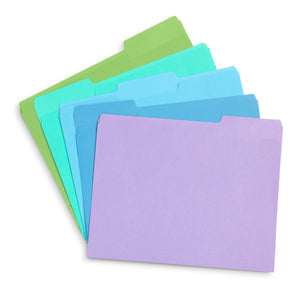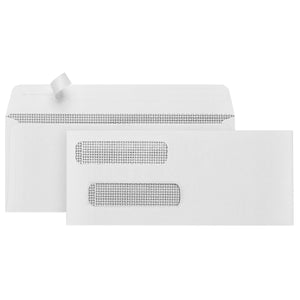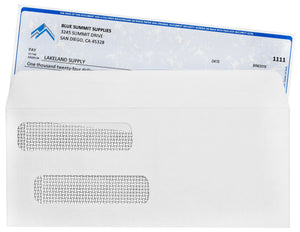Math—love it or hate it, calculators make our lives a whole lot easier and more accurate! But what type do you need? What’s the best calculator for business vs. school vs. home? Can too many features get in the way? What’s the best size for your needs? This post is a complete guide to different types of calculators, including desk calculators, classroom calculators, scientific calculators, and online calculators.
Different Types of Calculators
There are many different kinds of calculators out there, and they come with a range of different features. Calculators are designed to quickly compute mathematical problems. Basic calculators are only designed to handle addition, subtraction, multiplication, and division, but more advanced calculators, like scientific calculators, can perform more complex actions.
It’s important to keep in mind that having more features doesn’t mean it’s a better calculator for your needs. What will you be using the calculator for? Do you frequently have to solve complex equations? Does your job require a lot of accounting? Or do you just need one for simple everyday calculations? Consider what you will use the calculator for before investing in one with a lot of different features you don’t need and won’t use.
The size of the calculator can affect the user experience for many people, especially those who have vision trouble. Who will use the calculator? A construction worker or technician will want much larger buttons and a larger display than what’s required for a classroom.
Best Basic Calculator
A basic calculator is designed to perform basic arithmetic. It’s sometimes referred to as a 4-function calculator, as all it’s programmed to do is addition, subtraction, multiplication, or division.
Unless you work in a mathematical, scientific, or engineering field, you very likely only need those four functions. If you don’t like to do math in your head, a basic calculator can help when it comes time to work out a monthly budget or calculate a tip.
Provided you don’t work in the financial industry, the best office calculator is a basic one.
Best Desk Calculator
A desk calculator has large, clear displays and ergonomically designed buttons. It’s larger than a basic calculator and is designed to lie flat on a desk. Desk calculators often come with a display that tilts up, so the user can easily see the numbers they’re typing without having to crane their neck.
Desk calculators come with practical functions, such as percentage calculation, square root calculation, and more. They’re perfect for use at work or at home. The larger numbers and display are easier to see, making them especially useful for those with limited vision or for children beginning to learn their numbers.
Best Kids/Classroom Calculator
In order to develop a child’s mathematical reasoning, numerical fluency, and number sense, children must practice working through math problems in their heads as well as on paper. Using a calculator takes away a child’s opportunity to develop these necessary mathematical skills, as in order for math skills to develop, they need to be practiced and repeated regularly.
Using a calculator in an elementary school classroom hinders the development of a child’s fundamental math skills. That said, if you’re looking for a classroom calculator to help students check their work and work through their multiplication tables, any basic calculator will do.
The Helect H1001B-Calculator has larger, easy-to-use buttons and comes in multiple bright colors. The Catiga Basic Calculator also comes in a number of playful colors, but it’s more compact.
Best Scientific Calculator
A scientific calculator is used for computing advanced functions, helping you to calculate mathematics, engineering, and science problems. These calculators have far more buttons than a basic or desk calculator, which only allows for addition, subtraction, multiplication, and division. The extra buttons enable you to write and solve a range of complex equations.
Scientific calculators help users solve the following problems:
- π problems
- Logarithm problems with base 10 and the natural base
- Scientific numbers that have a multiplication by 10 to a certain power
- Probability problems that use the factorial function
- Trigonometry problems
You can use a scientific calculator to solve trigonometry problems that involve sine, cosine, and tangent, as well as their inverses and hyperbolic functions. You also have a button for Euler's constant, e, and π. Plus, scientific calculators have buttons that enable you to calculate exponents to any power. In terms of science, these calculators come with an Exp button that allows you to quickly input scientific numbers.
Engineering problems use scientific numbers, logs, and exponents. As anyone in engineering will know, these kinds of problems are typically longer expressions composed of several steps, making them tedious to solve by hand. Scientific calculators enable you to input the entire expression, so all you need to do is press the = sign to find the answer. The calculator will complete each calculation in the right order, following the order of operations.
Best Graphing Calculator
A graphing calculator can plot graphs, solve simultaneous equations, and perform a range of tasks with variables. It has the ability to display plotted graphs for complex equations, like parabolas, and has much more advanced features than a basic calculator.
Graphing calculators are a common tool in high-level mathematics courses. They provide a visual way to study the various mathematical disciplines, such as algebra, trigonometry, and calculus. Its large display is able to show several lines of calculations and text at the same time. Most graphing calculators are also programmable, meaning you can create customized programs for education, engineering, and scientific applications.
Some graphing calculators come with a computer algebra system (CAS), so they can produce symbolic results, meaning they are capable of manipulating algebraic expressions and can perform operations like simplify, factor, and expand. They can also provide answers in their exact form without numerical approximations.
A number of graphing calculators can also be attached to devices like weather instruments, pH gauges, electronic thermometers, and more, so they can function as data loggers as well as communication modules for polling and interactions with a teacher or professor in a laboratory setting.
Best Printing Calculator
A printing calculator, also known as an adding machine or a financial calculator, is a desktop calculator that’s primarily used by accountants, financial institutions, and tax professionals.
Printing calculators give you the ability to review and verify your calculations, as they print out your calculations as you type them in. A printing calculator allows you to double check your work without doing the math a second time. The printouts verify the accuracy of your work, so they can be removed and stored with your records as proof your calculations are correct.
The large buttons on a printing calculator make it easy to type quickly and accurately, and the large display means you don’t need to strain your eyes to read the numbers.
The majority of printing calculators come with a Grand Total function, which enables you to add the sum of previous totals calculated. This is extremely useful when you need to calculate numerous different lists of figures and then add them together to discover the net result, such as on a tax return form when you need to calculate income by category and then combine those numbers to determine the total annual income.
Best Printing Calculators:
Best Free Online Calculator
When you search for an online calculator in Google, a free one will appear. You can use the calculator directly within the search page without having to go to another webpage. The Google calculator has both basic and complex features.
With the Google calculator, you can calculate arithmetic, functions, the value of physical constants, and base and representative conversion. You can also use it to graph exponential, trigonometric, and logarithmic functions, as well as 3D graphs, but only for desktop browsers that support WebGL.
There are a number of other free calculators online in addition to the Google calculator.
Simple, free online calculators can be found at:
Best Calculator App
If you have an iPhone, your phone comes with a basic built-in app called “Calculator,” which features basic calculator functions. To access the scientific calculator, all you need to do is rotate the iPhone to its landscape orientation. This will open up access to a number of other buttons.
Android phones also come with a calculating app, which is also called “Calculator.” It comes with the four fundamental mathematical operations as well as engineering calculations. To access the advanced functions, all you need to do is tap the engineering calculator icon.
If you’re looking for other options, the 7th Gear Calculator app includes both a standard and scientific calculator. The Calculator Air app also includes basic and scientific functions as well as an option to take a photo of a math problem to automatically calculate.
More From Blue Summit Supplies
We have a number of stationery supply guides to help you choose the best tools for your office, school, or personal needs.
Do you love stationery as much as we do? Follow our office and school supplies blog for the latest trends, product comparisons, and more.
If you have any questions or want to talk to someone about office supplies, send us an email or connect with us on Twitter, Facebook, or Instagram.
 For more informative articles about office supplies, subscribe to our email newsletter!
For more informative articles about office supplies, subscribe to our email newsletter!
Never fear, you won't begin receiving daily sales emails that belong in a spam folder. Instead, we promise a fun weekly roundup of our latest blog posts and great finds from across the web. And if you lose interest, it's always easy to unsubscribe with a single click.


















